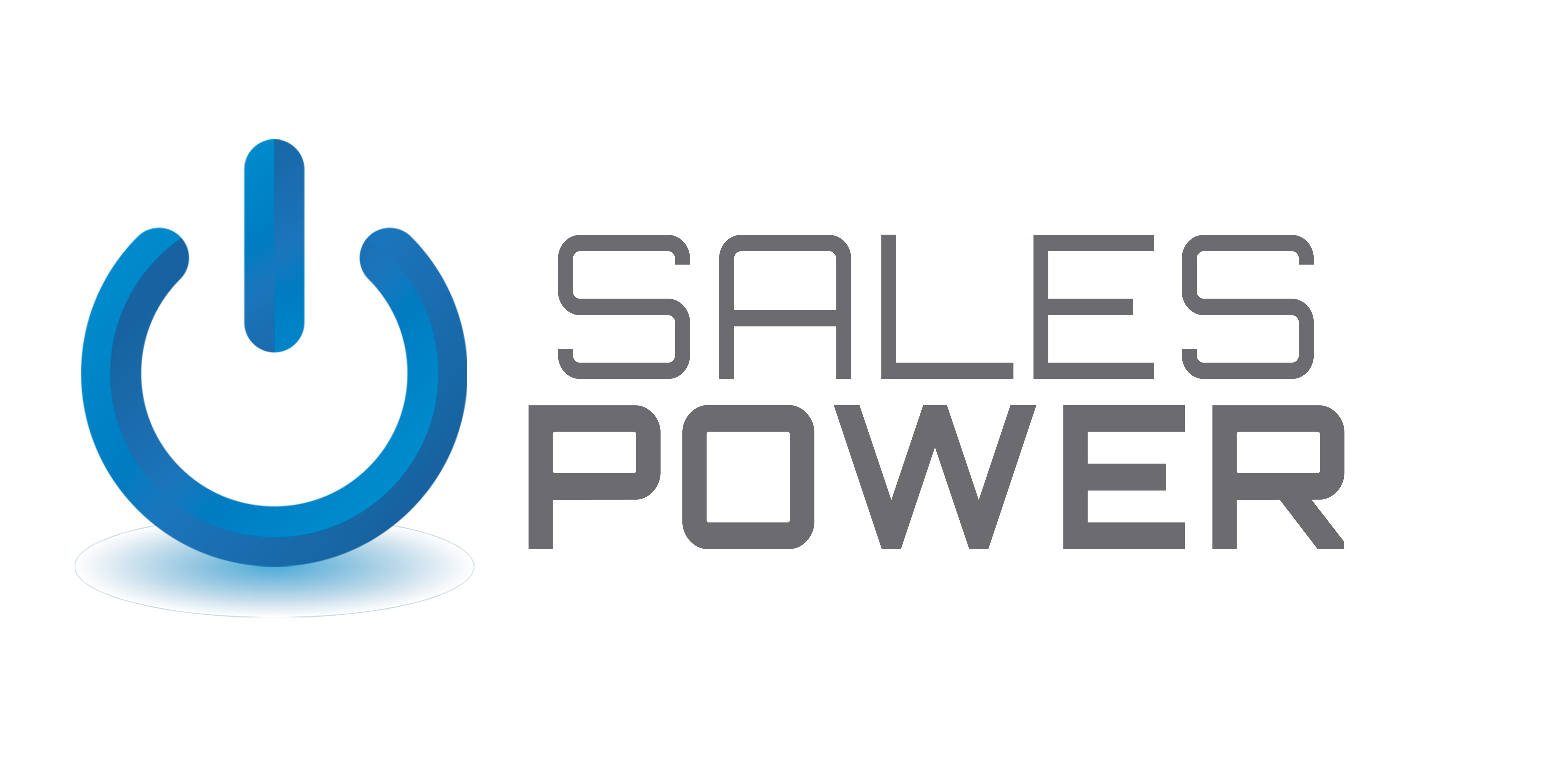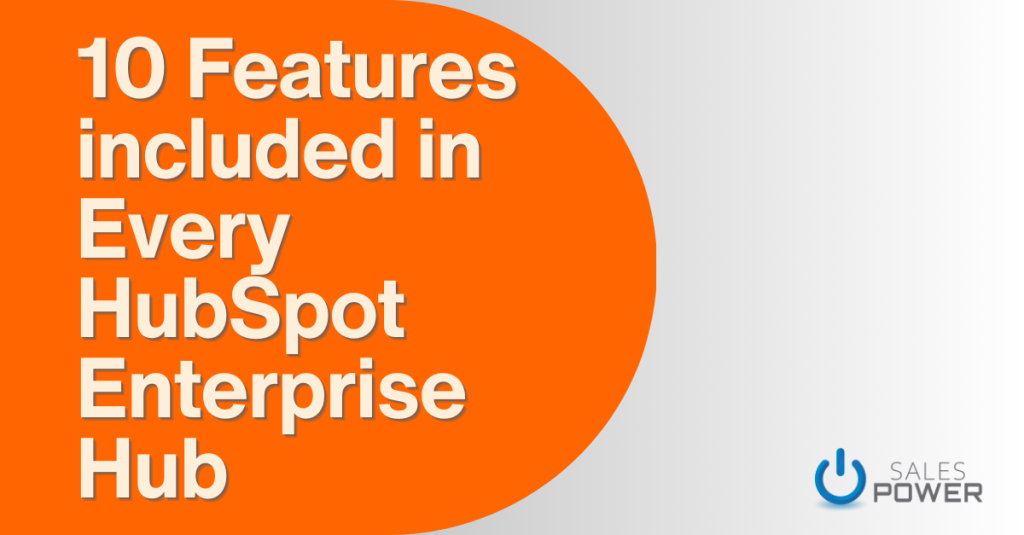Choosing HubSpot Enterprise Can Pay Off
Selecting the right platform for your business can significantly impact your growth and efficiency. As seasoned HubSpot and CRM experts, we understand the importance of choosing a solution that not only meets your current needs but also scales with your ambitions. HubSpot stands out with its robust abilities, but its enterprise features such as custom objects, advanced security, and custom permissions, will add a powerful addition to your business at a reasonable additional cost. It’s an easy decision when you consider upgrading sales and/or service hub, knowing that the ROI is there. Whether you’re managing complex teams or safeguarding sensitive data, the HubSpot Sales Enterprise Hub, HubSpot Service Enterprise Hub, along with Marketing and Operations Enterprise Hubs offer unparalleled functionality to enhance your operations. Let’s delve into the compelling features that make HubSpot Enterprise a worthwhile investment for your business, regardless of which hub you buy.
Key Consideration: Cost vs Efficiency
When contemplating an upgrade to HubSpot Enterprise Hub, businesses must carefully assess their current and future needs. The decision to invest in an enterprise-level CRM solution can significant but the additional costs are not. While enterprise hubs come at a higher cost, the enhanced efficiency, security, and insights they provide can lead to substantial long-term benefits for your organization.
Depending on your cost per employee, one hour of additional efficiency per month can cover the additional cost of a HubSpot Enterprise Sales or Service seat.
Understanding the Different HubSpot Enterprise Hubs
HubSpot offers a suite of Enterprise Hubs, each tailored to address various aspects of business operations with advanced capabilities. Here’s a closer look at the different HubSpot Enterprise Hubs and what they bring to the table:
Sales Hub Enterprise: This hub enhances sales performance with features like sophisticated sales automation tools, predictive lead scoring, and an array of sales analytics. It’s designed to empower sales teams to close deals more efficiently and predictably.
Service Hub Enterprise: Focused on customer support, this hub includes advanced tools for managing support tickets, customer feedback, and service level agreements (SLAs). It helps businesses deliver exceptional customer service and improve retention rates.
Marketing Hub Enterprise : This hub offers powerful marketing automation capabilities, comprehensive analytics, and customizable reporting to help businesses scale their marketing efforts. It aids in creating highly targeted campaigns that drive engagement and conversions.
Operations Hub Enterprise: Provides robust tools for data management, process automation, and integrations. This hub is designed to streamline business operations and improve data accuracy across platforms, allowing for better decision-making and efficiency.
- Content Hub Enterprise:By leveraging the HubSpot Enterprise Content Hub, businesses can streamline their content operations, enhance brand visibility, and drive meaningful engagement with their target audience. Its robust capabilities not only improve efficiency but also empower businesses to deliver content that resonates with and converts their audience.
Each of these hubs can function individually, but also share several features. When leveraged together, they provide a comprehensive customer relationship management solution that maximizes growth and operational efficiency. Companies of all sizes can take advantage of the benefits that HubSpot provides.
10 Features included in all HubSpot Enterprise Hubs
HubSpot Enterprise Hubs offer a suite of powerful features designed to enhance team collaboration, streamline processes, and provide advanced tools for complex business needs. Let’s explore some of the core functionalities common to all enterprise hubs, that set it apart.
1. Log In as Another User
The “Log In as Another User” feature in HubSpot Enterprise Hub is a powerful tool for administrators and team leaders. It allows authorized users to access the system as if they were another team member, providing valuable insights and troubleshooting capabilities.
This feature is particularly useful for training purposes. Administrators can navigate the system from a user’s perspective, identifying any issues or areas for improvement in their workflow.
It also aids in troubleshooting. When users encounter problems, support teams can replicate the issue by logging in as that user, leading to faster resolution times.
However, it’s crucial to use this feature responsibly. HubSpot’s documentation emphasizes the importance of maintaining user privacy and security when utilizing this functionality.
2. Organize by Teams
HubSpot Enterprise Hub’s team organization feature allows businesses to structure their CRM in a way that mirrors their actual organizational hierarchy. This promotes more efficient collaboration and clearer accountability within the system.
By organizing users into teams, companies can streamline permissions management. Instead of assigning permissions individually, administrators can set access levels for entire teams, saving time and reducing the risk of errors.
This feature also enhances reporting capabilities. Managers can easily generate team-specific reports, providing valuable insights into performance at both the individual and group levels.
Moreover, team organization facilitates better resource allocation. By clearly defining team structures within the CRM, businesses can more effectively distribute workloads and assign tasks based on team specialties and capacities.
3. Utilize a Sandbox Account
A sandbox account is a crucial feature for businesses looking to test new configurations or train employees without risking their live HubSpot environment. It provides a safe space to experiment with new features, workflows, and integrations.
Using a sandbox account allows teams to:
Test complex automation workflows before implementation
Train new employees without affecting real data
Experiment with new integrations risk-free
Simulate different scenarios to optimize processes
This feature is particularly valuable when planning major updates or restructuring within the CRM. It ensures that any changes are thoroughly tested before being applied to the production environment, minimizing disruptions to daily operations.
4. Custom Objects Explained
Custom objects in HubSpot Enterprise Hub are a game-changer for businesses with unique data structures. They allow companies to create and manage data that doesn’t fit into standard CRM objects like contacts, companies, or deals.
For example, a software company might create a custom object for “Products” to track specific details about each software offering. This object could then be associated with deals, companies, or contacts, providing a more comprehensive view of customer interactions.
Custom objects are fully integrated into HubSpot’s ecosystem. This means they can be used in workflows, reports, and even custom dashboards, offering a truly tailored CRM experience.
However, implementing custom objects requires careful planning. It’s essential to consider how they will interact with existing data structures and processes to ensure optimal functionality and user adoption.
5. Creating Custom Tabs
Custom tabs in HubSpot Enterprise Hub are part of the Standard CRM interface configuration allowing businesses to organize information in a way that makes sense for their unique workflows. This feature enhances user experience by providing quick access to the most relevant data.
By creating custom tabs, companies can:
Group related information logically
Streamline navigation for specific user roles
Highlight key metrics or data points
Improve overall CRM adoption by making it more intuitive
For instance, a marketing team might create a custom tab that combines campaign performance data with related content assets, providing a comprehensive view of their marketing efforts in one place.
It’s important to balance customization with simplicity. While custom tabs offer great flexibility, overcomplicating the interface can lead to user confusion and decreased efficiency.
6. Property Level Permissions
Property level permissions in HubSpot Enterprise Hub provide granular control over who can view and edit specific data fields. This feature is crucial for maintaining data integrity and ensuring compliance with privacy regulations.
With property level permissions, administrators can:
Restrict sensitive information to authorized personnel only
Customize data access based on roles or departments
Prevent accidental edits to critical data fields
Ensure compliance with data protection regulations like GDPR
For example, a company might restrict access to financial data properties to the finance team, while allowing broader access to general contact information.
Implementing property level permissions requires a thorough understanding of your organization’s data needs and security requirements. Regular audits of these permissions are recommended to maintain optimal security and efficiency.
7. Advanced Security Measures
HubSpot Enterprise Hub incorporates state-of-the-art security measures to protect your valuable business data. These advanced features go beyond basic password protection, offering multiple layers of security to safeguard against potential threats.
One key feature is two-factor authentication (2FA), which adds an extra layer of security by requiring users to provide two different authentication factors to verify their identity. This significantly reduces the risk of unauthorized access, even if passwords are compromised.
Enterprise-grade encryption is another crucial security measure. HubSpot uses industry-standard encryption protocols to protect data both in transit and at rest, ensuring that sensitive information remains secure at all times.
Regular security audits and compliance certifications, such as SOC 2 Type II, demonstrate HubSpot’s commitment to maintaining the highest security standards. These measures provide peace of mind for businesses handling sensitive customer data.
8. Implementing Single Sign-On
Single Sign-On (SSO) is a powerful feature in HubSpot Enterprise Hub that enhances both security and user experience. It allows users to access multiple applications with one set of login credentials, streamlining the authentication process while maintaining robust security.
Key benefits of implementing SSO include:
Improved user experience with fewer passwords to remember
Enhanced security through centralized authentication management
Reduced IT support costs related to password resets
Easier onboarding and offboarding of employees
To implement SSO, organizations typically need to:
Choose a compatible identity provider (IdP)
Configure the IdP settings in HubSpot
Set up user provisioning and deprovisioning
Test the SSO implementation thoroughly
While SSO offers numerous advantages, it’s crucial to implement it correctly to avoid potential security vulnerabilities. Consulting with IT security experts during the setup process is highly recommended.
9. Managing Sensitive Data
Protecting sensitive data is a top priority for any business, and HubSpot Enterprise Hub provides robust tools for managing this critical information. The platform offers features that help organizations comply with data protection regulations while maintaining operational efficiency.
Field-level encryption is a key feature for protecting sensitive data. This allows businesses to encrypt specific fields containing sensitive information, adding an extra layer of security to critical data points.
Data retention policies can be easily implemented and managed within HubSpot Enterprise Hub. This allows organizations to automatically delete or anonymize data after a specified period, helping to comply with regulations like GDPR.
Access logs provide a detailed audit trail of who has accessed or modified sensitive data. This feature is invaluable for monitoring potential security breaches and maintaining compliance with data protection standards.
It’s important to regularly review and update data management practices to ensure ongoing compliance and security. HubSpot provides resources and documentation to help businesses stay informed about best practices in sensitive data management.
10. Leveraging Custom Events
Custom events in HubSpot Enterprise Hub allow businesses to track and analyze specific user actions that are unique to their operations. This feature provides valuable insights into customer behavior and engagement, enabling more targeted marketing and sales strategies.
By creating custom events, companies can:
Track product usage patterns
Monitor customer journey milestones
Measure the effectiveness of specific features or campaigns
Trigger automated workflows based on user actions
For example, a SaaS company might create a custom event for when a user activates a specific feature within their product. This data can then be used to tailor onboarding processes or identify upsell opportunities.
Implementing custom events requires careful planning to ensure that the right actions are being tracked and that the data collected is actionable. It’s important to align custom events with key business objectives and customer success metrics.
Comparing HubSpot Sales and Service Hubs
HubSpot Marketing and Operations Enterprise have select features that benefit the organization but we focus on Sales and Service solutions. HubSpot Sales Enterprise and Service Enterprise Hubs offer advanced features tailored to their respective functions, but they also complement each other to provide a comprehensive customer relationship management solution and increasing efficiency and productivity in your organization.
Feature | Sales Enterprise Hub | Service Enterprise Hub |
|---|---|---|
Primary Focus | Sales pipeline management | Customer support and service |
Key Features | Predictive lead scoring, Quote approvals | Custom surveys, Video creation |
Automation | Sales process automation | Ticket routing and escalation |
Reporting | Sales analytics and forecasting | Service level agreement (SLA) tracking |
Both hubs benefit from HubSpot’s core CRM features, ensuring seamless data flow between sales and service teams. This integration allows for a more holistic view of the customer journey.
When used together, these hubs can create powerful synergies. For instance, service interactions captured in the Service Hub can inform sales strategies, while sales data can help service teams provide more personalized support.
Maximizing Benefits of HubSpot
Everyone can take advantage of these 10 HubSpot Enterprise at a reasonable cost. Whether your business is small or large, there are pricing strategies available that allows you to get these 10 features for a very reasonable cost.
Contact SalesPower today to see how upgrading to HubSpot Enterprise can benefit your business.


